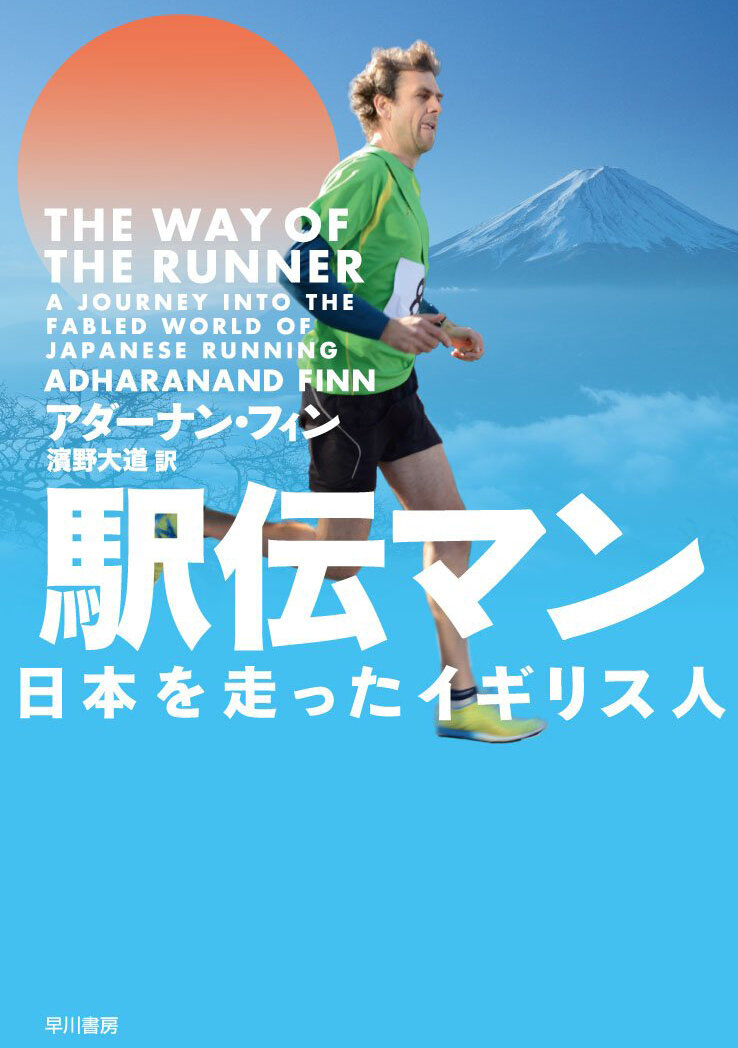The Way of the Runner
A journey into the obsessive world of Japanese running
Japan is the third fastest marathon nation on Earth, after Kenya and Ethiopia. But why do we hear so little about it? Adharanand Finn moved to Japan to discover more about this unique running culture. Along the way he met marathon monks who run a thousand marathons in a thousand days, the corporations who sponsor running teams, and the ekiden competitors who run marathon relays. What he learned - about competition, about teamwork and about himself - will fascinate anyone who is keen to explore why we run, and how we might do it better.

EXCERPT FROM THE WAY OF THE RUNNER
| Prologue
It’s February 2001. I’m standing by a school wall in the small town of Hongō in western Honshu, Japan. I have a hangover.
The night before, my brother, who is a teacher at the school, took me straight off the plane from London, to what he referred to ominously as a naked festival. It involved drinking lots of saki, wearing nothing but a mawashi loincloth like a sumo wrestler, standing out in the freezing night with around two hundred similarly dressed men, and trying to grab hold of a long piece of cloth. As we all fought to get hold of the cloth, priests threw cold water over us. The scrum of two hundred men kicked, pulled and barged around in the dark for hours before someone finally, mercifully, emerged triumphantly with the cloth and disappeared up some steps to a shrine.
The next morning there is a picture of the melee in one of Japan’s national newspapers, featuring my pale backside right there in the middle. I can tell it is mine because in my dazed, drunken state I asked someone to write ‘Flash’ across my back. I was thinking I was Flash Gordon, for some reason. A man on another planet wrestling his way through a scrum of men. We’ve had barely four hours’ sleep before my brother is up again.
‘I’m running an ekiden,’ he says. ‘You want to run?’ I have no idea what an ekiden is, but running is the last thing on my mind that morning. I was once a keen runner, but years of working in the office of a London publishing company have left me all soft and pudgy. My running days are long behind me.
‘No,’ I say, scratching the back of my neck.
Instead he positions me by the school wall, gives me a raincoat to protect me from the drizzle, and goes off to join his team. An ekiden, it turns out, is a long-distance relay race. Every town in Japan seems to have one, and everyone gets involved in some way or another. If they’re not running, people offer to help marshal, or at the very least they come out to cheer the runners on.
I stand by the wall nodding and bowing as people bustle by under umbrellas, the race officials all wearing matching yellow raincoats. Behind me, in the school yard, everyone is gathering. I watch through the railings as athletes in shorts and singlets sprint up and down on the soggy gravel, preparing for the race. Many of them seem to be high-school students, but there are men and women of all ages taking part. They line up and then, after the bang of a starting gun, swarm off out of the school grounds and into the town.
The rain is soaking through my thin shoes, making my feet cold as I stand waiting by the empty road. The first-leg runners have to pass something called a tasuki, a sash, on to their team-mates further along the course, in the same way sprinters pass a baton in relays on the track. At some point the race will come back past me again, with my brother among them.
I decide to walk up and down to keep warm. Across the road an elderly couple stand under matching umbrellas, occasionally glancing up the road. It’s almost an hour later before the runners come back into view, scampering down the street, people along the course calling out to them, cheering them on. My brother, when he appears, towers over everyone, all six foot four inches of him, his face flushed, the rain in his eyes, grinning to me as he lopes by.
‘Go on, Vinny,’ I shout, wishing suddenly I was out there too. It looks fun. More fun than hanging around here by this wall with my freezing hands stuck under my arms. I have an urge to throw off my jacket and start running. I get this whenever I find myself watching a race rather than running it, wondering why I’m not out there too. This is such a friendly, communal event, with the whole town busily involved, that I feel left out standing here by the wall, like I’ve missed an opportunity to experience something uniquely Japanese.
It’s not until many years later that I find myself again invited to join a team and line up for an ekiden. But this time I’m primed, chomping at the bit, two stone lighter and ready to go.




















